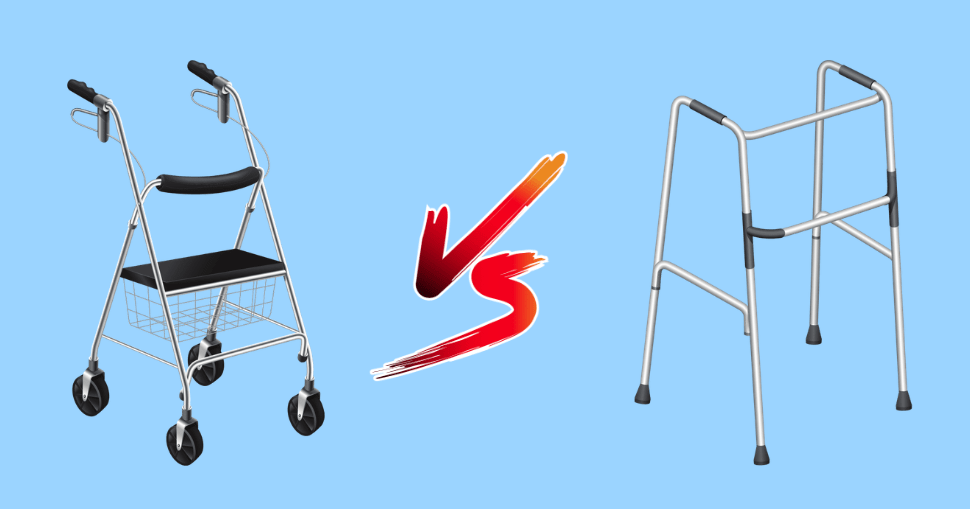Difference between walker and rollator: which one to choose?
Contents
1 # What is the difference between a rollator and a walker?
2# What are the advantages and disadvantages of using a rollator and a walker?
3# Which pathologies are rollators and walkers used for?
4# How to choose between a rollator and a walker?
5# Which type of rollator to choose?
6# Which type of walker to choose?
During your life, you may find yourself having to deal with some situations in which medical conditions can affect walking, balance, and strength of the lower limbs.
Unfortunately, a similar need is not always felt in old age, but also in childhood.
The causes can be different.
The most common are caused by:
trauma (bone fractures, soft tissue injuries, etc.);
neurodegenerative pathologies (Alzheimer, Parkinson, etc.);
surgical treatments (hip and knee prosthesis, etc.);
Generally the first step concerns the use of aids such as rollators and walkers.
Not an easy choice, as they are often used as synonyms, giving confusion and uncertainty about which device is the best to adopt.
What is the difference between a rollator and a walker?
Although they have similar purposes, a rollator and a walker are actually very different.
The rollator is a device capable of giving support and mobility over long distances.
It consists of two front and two rear wheels.
Some models are equipped with accessories that give support to the patient - they are applied to the person’s pelvis or body - with the aim of facilitating movement and at the same time decrease the body weight on the lower limbs.
The rollator gives you the ability to move freely while walking, and at the same time, ensuring greater stability.
Most rollators have a fixed-fold-down seat to sit on, making them ideal in case of severe fatigue and if you need to take a break, but at the same time, there is no place available, such as a chair, a bench, etc.
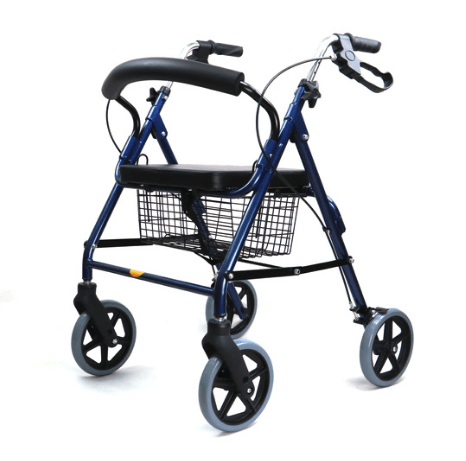
The walker, on the other hand, gives robust support and balance for short and medium distances.
It is made up of four legs (sometimes two legs and two small wheels).
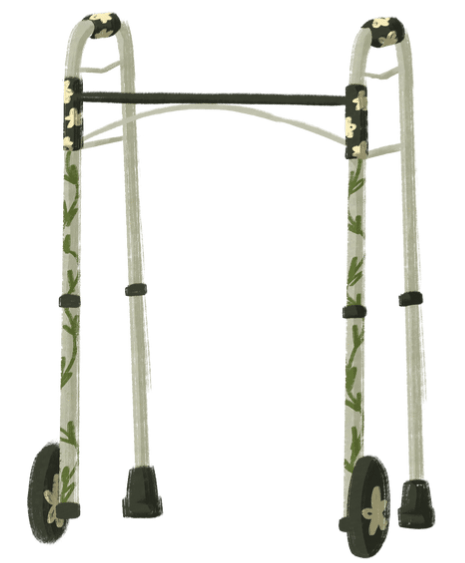
In some cases there are two tennis balls under the rear legs to facilitate the push, if you are not able to lift the walker independently yet.
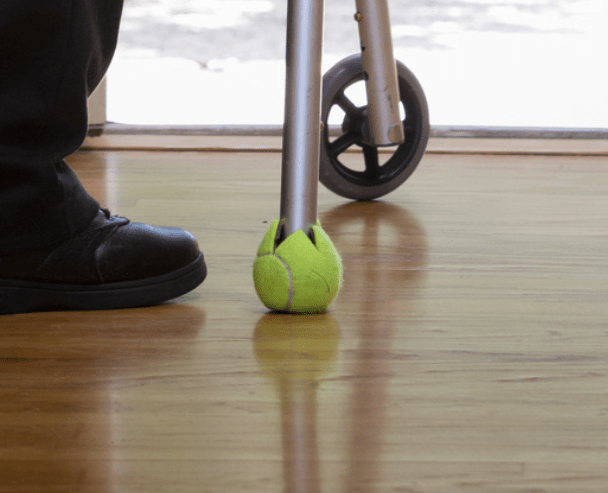
What are the advantages and disadvantages of using a rollator and a walker?
Rollator advantages:
- They do not need to be lifted and can be used without assistance, by patients who do not have stability problems and upper limbs weakness;
- they require less energy than walkers, as they must be pushed and not lifted;
- thanks to components attached to the pelvis or trunk, they allow you to decrease the body weight;
- they are faster than walkers (they are in fact equipped with brakes with a “parking function”; it is possible to lock the walker, even if you release the two levers). They are safer if you are able to fully sustain your weight on both legs and stable enough to be able to walk at a more physiological speed, even uphill and downhill;
- in case of neurological deficits like Parkinson's disease and Alzheimer’s, they are very useful to help people to improve walking and core muscles stability, even though most of the time the patient needs some kind of assistance.
- in some cases they can be an excellent solution for those who are unable to use their upper limbs and cannot, therefore, force their arms on other supports such as crutches, sticks or walkers;
- handle brakes are a standard feature of walkers, which help you stop if you’re going too fast while walking.
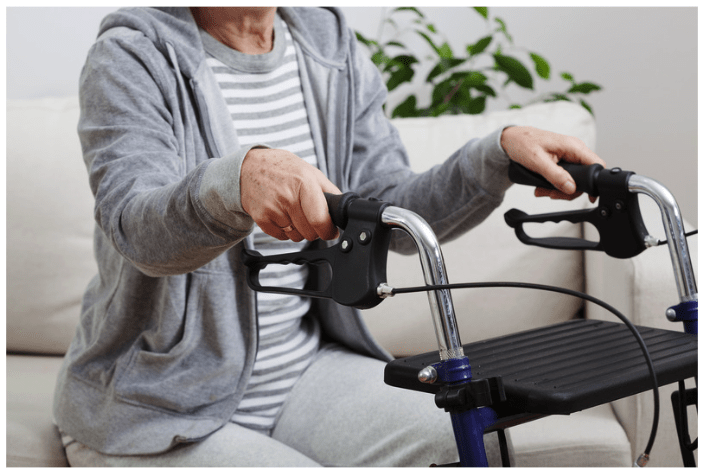
Rollators disadvantages:
- Many rollators cannot be closed, they are bulky, both for the shape of the model itself, and for the available accessories;
- some models cannot be used at home because they are too difficult to bring from one room to another;
- not all models are foldable.
Walkers advantages:
- Walkers have four legs and provide greater support and balance;
- they can be used after surgical treatments (for example knee / hip prostheses) and leg fractures, as an effective method to reduce the postoperative recovery period;
- it allows the user to release the weight from one leg and transfer it to the walker;
- they are foldable, and can be transported easily, unlike many walker models.
Walkers disadvantages:
- The rollator is more difficult to move since four-legged walkers need to be lifted up slightly with every step;
- They provide that the weight of the subject is unloaded using the upper limbs, it should be used only if the person is able to lean on the arms without problems;
- Over time, the subject may experience severe fatigue in the muscles of the arms, shoulders, and wrist joints.

Which pathologies are rollators and walkers used for?
The pathologies that make the person to adopt a walking aid, can be divided into:
Pathologies / affections of the musculoskeletal system:
- advanced osteoarthritis (of the hips and knees);
- arthritis (of the hips and knees);
- tumors of a limb or of lower compartment;
- pseudarthrosis;
- congenital pathologies and malformations;
- infection in a compartment of a lower limb;
- bone fractures (fractures of the femur, leg, etc.);
- lower limbs surgeries (prostheses, external fixators, etc.);
- advanced osteoporosis.
Neurological disorders:
- Parkinson's disease;
- stroke;
- Alzheimer's disease;
- hemiplegia, hemiparesis;
- senile dementia;
- spinal muscular atrophy;
- amyotrophic lateral sclerosis;
- myopathies;
- ataxias.
Inflammatory, neoplastic and vascular diseases:
- multiple sclerosis;
- HIV;
- tumors;
- hematomas, vascular malformations;
- cerebrovascular lesions.
How to choose between a rollator and a walker?
Please note: Before making this type of decision, always seek advice from a physiotherapist or healthcare professional, if you need specific help choosing between these devices.
Depending on your physical abilities and your lifestyle, there are some considerations to make when choosing between a rollator and traditional walker:
- How is your balance?
First of all you should examine if there are stability complications, and if the walk can be done without any assistance, or if you need an operator, a family member, etc.
- What kind of terrain do you need to move on?
In case you have to push the walker on hard surfaces like carpets, you should be able to have enough strength in the upper body and arms.
For example:
Do you spend more time outdoors? Do you walk on street or dirt roads?
Do you walk mainly at home on a parquet or do you deal with rugs and carpets?
In this case the four larger wheels of the walkers, would allow you a greater walking speed and you would be able to manage uneven, and not flat terrains.
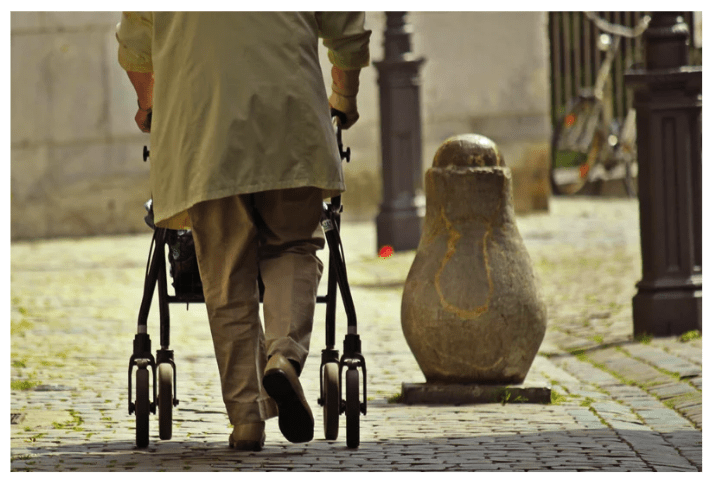
- How tall are you?
Many rollators and walkers have an adjustable height, but of course there are limits.
Make sure you can adjust it to a point where you can stand straight enough while using the device.
If you find yourself very bent forward, the product probably isn't tall enough for you.
The ideal height must allow the upper limbs to maintain a slightly flexed position and to keep the muscles of the arms relaxed and allow blood to flow.
- How much do you weigh?
Rollators and walkers have different weight limits.
Most standard walkers are built for people between 80 and 135kg.
Walkers have similar weight restrictions, particularly if a walker has a built-in seat, which will have to support your weight while sitting.
Heavy-duty walkers can support just a little over 200kg.
- How much strength do you have in your upper body and arms?
Upper body strength is an essential factor, particularly for those considering a traditional walker, as four-legged walkers need to be raised slightly each step.
Two-wheeled walkers don't require as much upper-body strength, but on difficult terrain it can still be problematic.
Rollators, on the other hand, do not require the same amount of upper body strength.
If you are unable to lift the aid on your own, it is important that you have some kind of assistance, or a family member, who can help you during walking.
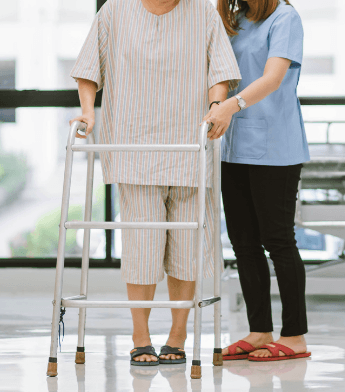
Which type of rollator to choose?
Classic/standard rollator:

Axillary/armpit rollator: allows the weight of the body to be unloaded thanks to the presence of axillary, underarm or antebrachial supports.
Forearm rollator: support the weight of the body, for those who cannot use the upper limbs.
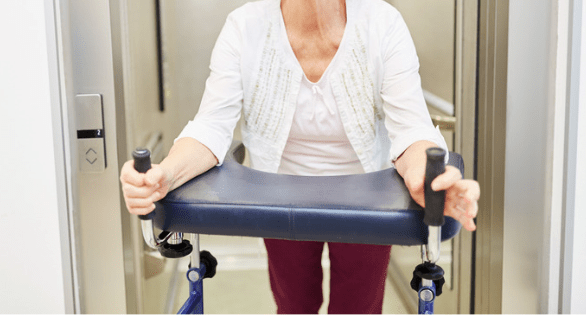
Rollators with 4 or 2 front wheels:
- They allow the patient to move in space without having to fully lift the walker;
- not suitable for uneven surfaces or uphill / downhill;
- they have swiveling wheels and can be all 4 directional wheels or only the 2 front wheels (they change direction as supermarket trolleys);
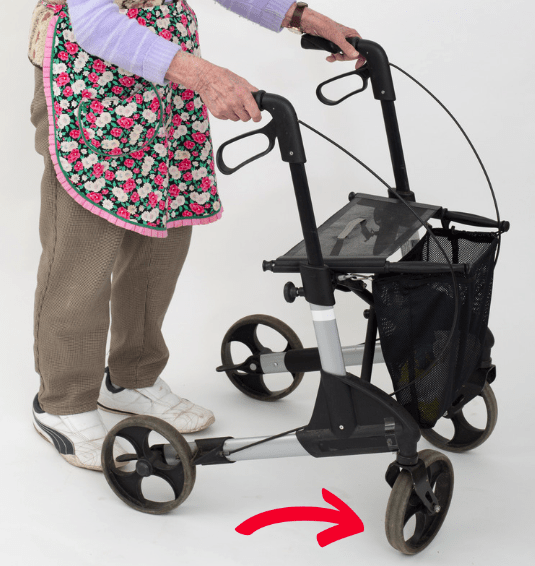
3 wheels rollator:
- It has features deriving from both the “home walker” and the “outdoor walker”;
- the wheels are higher, allowing you to more easily, overcoming small differences in height, and are thicker (they usually have a diameter of around 15 cm);
- They allows you to more easily overcome small height differences, such as the threshold of the house, the entrance to the lift, carpets, etc .;
- the wheels are made in solid rubber, guaranteeing total anti-puncture;
- they are foldable and easy to carry by car, public transport and to store in a corner of the house once used;
- there are two brakes that intervene on the rear wheels, with a parking block as in standard walkers.
Which type of walker to choose?
Standard rigid and articulated walkers:
- They do not have front or rear wheels;
- they have 4 fixed legs;
- the patient must lift the walker in order to continue walking;
- they have a unique, solid structure to give the subject a strong stability during the walk. The articulated walkers allow the person to walk, moving forward by giving support on one side and then to the other.
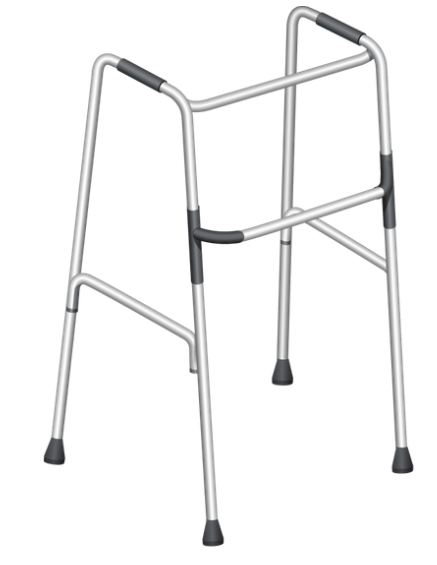
Narrow walker:
- It is useful when walking through narrow doors (for example 60 cm wide), or in narrow corridors and passages.
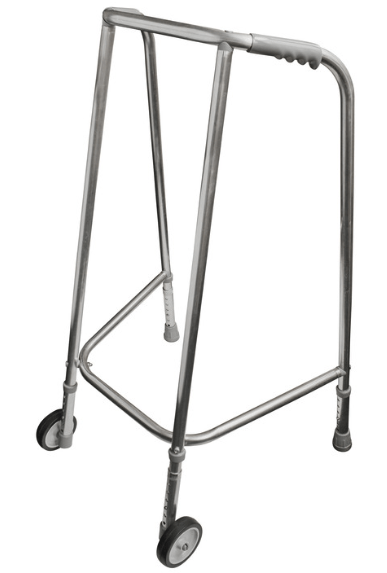
Specific walkers:
Pediatric rollator/walker for children:
- adjustable in height, it allows to accompany the child during growth;
- easily foldable and transportable;
- it is made with solid and resistant materials, suitable for use on flat surfaces;
- it allows great mobility to the child, while keeping the body and pelvis adequately stabilized.
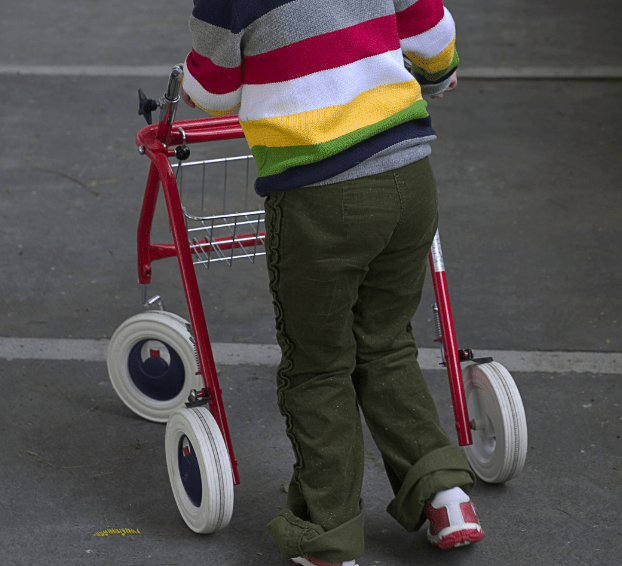
Rollator/bariatric walker:
- It is suitable for people who are severely overweight, with limited walking ability or in the rehabilitation phase;
- it is made of a folding steel frame and is wider than a normal walking device;
- solid wheels offer excellent grip and resistance to skidding, especially on smooth surfaces;
- it has a weight capacity of 200 kg thanks to a reinforced structure and solid 8 ”(200 mm) wheels;
- the back and seat are padded for greater comfort;
- it is equipped with parking brakes and ergonomic grips with adjustable height.
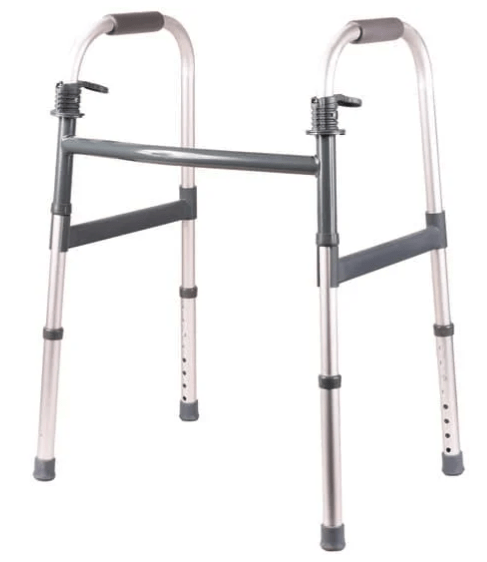
Hybrid walker:
- has two rear tips and two front wheels;
- you can lift it slightly and sliding it forward, while keeping your body weight on the walker;
- it has no seats;
- should be used in smaller floor plans, where a full-size walker would be less useful due to its size.
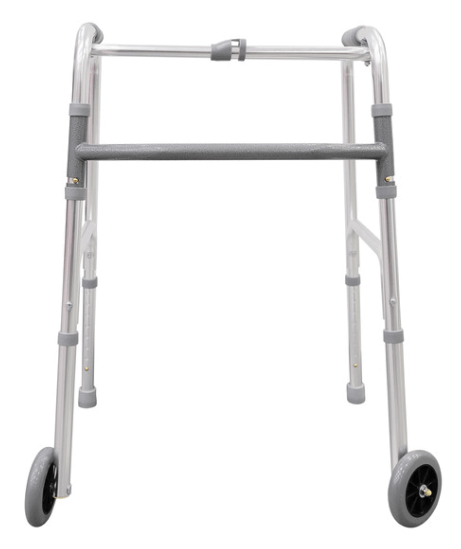
Conclusions:
In this article we have seen the difference between walker and walker.
Both have unique characteristics, which define them by use, characteristics (both of the aids themselves, and the person), advantages and disadvantages according to your needs.
Unfortunately, the common trend is still to use them as synonyms, and all of this leads to more confusion for those who are in serious need of assistance to walk.
What was your choice between a rollator and a walker?
Did you get more benefits from the rollator or walker?

